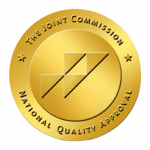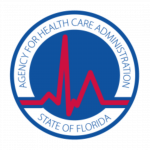Substance use and addiction can happen to anyone and are explained by researchers and medical professionals as a disorder. Substance use disorder can be genetic, a learned behavior, or caused by a pre-existing health condition that required the use of substances. Some of the most common risk factors of substance use disorder include:
- Family history or genetics
- Environmental factors
- Pre-existing mental health conditions
- Age of exposure
Although living with, or through, some of these risk factors, does not mean you will develop a substance use disorder. There are a plethora of resources at your disposal to help you take the right preventative measures to avoid addiction. Educate yourself on the risk factors, talk to a therapist, or find a peer group that can relate to you and provides you with proper support to keep you on the sober path.
Family History / Genetics
Scientists estimate that genetic factors account for 40 to 60 percent of a person’s vulnerability to addiction. When someone has a family member with a history of substance abuse disorder they have an increased risk of developing an addiction. In 2004, the Howard Hughes Medical Institute at Duke University Medical Center found that specific proteins had a relationship with both drug addiction and learning and memory.
With the use of mice, research showed that the mice containing low levels of these proteins took longer to find their way around the maze. Furthermore, these mice were also more sensitive to cocaine. Specific genes can also be related to substance abuse, however, proper prevention and guidance can help avoid this potential outcome.
Environmental Factors
Environmental factors can play a big role in the risk of developing a substance use disorder. This includes trauma, whether emotional, physical, or sexual. Your peers and the people you hang out with also have a big influence if they are using around you. Daily exposure to toxic environments can pressure many into joining in on the toxic behaviors.
For example, many students not only talk about substance use but actually use it on school property. Constantly being exposed to these dangerous behaviors puts you at higher risk for developing a substance use disorder. In many cases, teens who are lacking parental involvement are more likely to abuse themselves. The same scenario goes for children living with parents who are abusing drugs in the home.
Pre-existing Mental Health Condition
Substance use disorders and mental health disorders are interconnected, whether directly or indirectly. Those who are suffering from a mental illness are often found to have a substance addiction or vice versa. However, this does not mean that everyone living with a mental illness will abuse substances.
Mental health conditions like PTSD, depression, or ADHD are all susceptible to developing a substance use disorder. This is because it helps people cope with the anxiety and emotional rollercoaster they may be experiencing. When battling with a mental health condition, the fear of substance use is always prevalent. However, there are many centers that offer services for both mental health and addiction.
For example, the Harm Reduction Center (HARC) offers both addiction treatment programs and mental health treatment. The HARC team has the experience and capabilities of treating dual diagnosis, which is someone who is two co-occurring disorders (a mental health disorder and substance use disorder).
Age of Exposure
According to the National Library of Medicine, exposure to alcohol and illicit drugs during early adolescence has been associated with poor outcomes in adulthood. Starting with a gateway drug, like marijuana, at a young age can lead to a bigger issue. This is because once the marijuana isn’t giving them enough of a high, they move on to stronger substances. This is one of the strongest and most consistent predictors of an increased risk of substance abuse disorder.
There are many factors that go into the reason teens try substances at a young age, including:
- Kids who move from state to state, home to home, or change schools frequently.
- Having a sheltered childhood and unaware of the dangers of alcohol and drugs and
- Going right into college life for the first time.
- Easily tempted and peer preasured
- Hanging out with the wrong crowd.
- Lack of supervision in the home.
- Struggling with self-control, as well as healthy decision-making skills.
The simple stress of adolescence can have a negative impact on teens. However, this does not mean every child who goes through these experiences will develop a substance addiction. Although therapy or extra support can be necessary if risky behaviors begin to present themselves.
Avoid Risk Factors of Substance Use Disorder – Get Help Today
Some of the common risk factors of substance use disorder are unavoidable. However, to break the stigma, you’ll have to put in the work. The Harm Reduction Center is a private health care facility that offers addiction treatment and mental health treatment programs. We utilize proven and effective treatment options such as Medication-Assisted Treatment (MAT), EMDR, group therapy, as well as cooperative medical involvement.
If you are looking for a facility that cares for each person that walks through their doors, contact HARC today.














